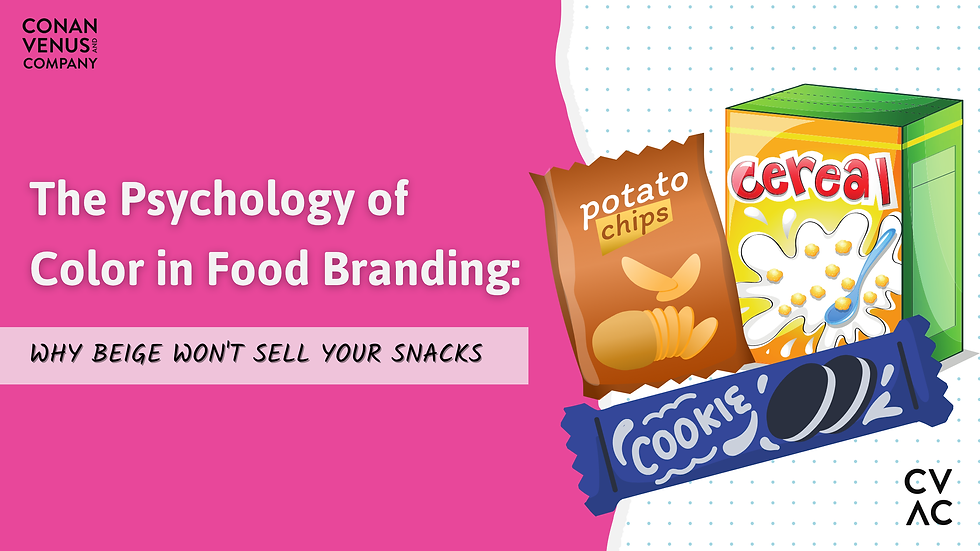Advertising Strategy 101
- Conan Venus
- Mar 3
- 4 min read
When to Follow (and Break) the 3-Second Rule

Ever drive past a billboard and actually remember what it said?
Chances are, the ones that stuck with you were short, sharp, and to the point. That’s because, on average, a driver has only three seconds to glance at a billboard before it disappears in the rearview mirror.
And in three seconds? The average reader can process about eight words.
That’s why some of the best billboard ads are laser-focused, using the absolute minimum number of words needed to make an impact.
But does this advertising strategy always apply? Not necessarily. Some of the smartest campaigns in history have intentionally broken the rule—and won big because of it.
Let’s break down the science behind short-form messaging, why less is (usually) more, and when breaking the rules can actually be the best move.
Why Brevity Wins in Advertising
Messaging works best when it’s both concise and strategic, whether on a billboard, a social media ad, or a product tagline.
Here are the reasons why concise messaging is a game-changer in advertising:
1. Attention Is a Limited Resource
According to a 2015 Microsoft study, the average human attention span has dropped to just eight seconds—shorter than a goldfish’s. 😳
In an era of non-stop content, people aren’t reading ads. They’re scanning. The faster your message lands, the better your odds of grabbing attention before it’s lost to the next distraction.
2. Cognitive Load Matters
Think of your brain as an internet browser. Too many open tabs? Things slow down. The same thing happens when an ad throws too much information at you.
A billboard isn’t the place for paragraphs. Clarity beats cleverness.
Nike doesn’t say, “We make high-performance athletic footwear and apparel for elite and everyday athletes.”
They say: Just Do It.
FedEx doesn’t explain their logistics network.
They say: The World On Time.
Short, punchy, and effective.
3. Less Is More Memorable
Ever heard of the “stickiness factor”? It’s the idea that certain messages are easier to recall because they’re simple, unexpected, and easy to digest.
Take Apple’s legendary slogan: Think Different.
Or McDonald’s: I’m Lovin’ It.
These aren’t wordy explanations of what the company does. They’re distilled, emotional triggers.
When your message is easy to process, it’s easier to remember.
When Breaking the Rule Works: The Economist Example
Now, here’s where things get interesting.
Brevity usually wins—but not always. Some brands have successfully broken the rule to create something even more powerful.
One of the best examples? BBDO London’s campaign for The Economist.
They took the classic “8-word rule” and flipped it on its head.
Their billboard read:
“A poster should contain no more than 8 words, which is the maximum an average reader can take in at a single glance. This, however, is a poster for Economist readers.”
Boom. Genius.
Instead of sticking to the rule, they made the rule-breaking itself the entire concept. It worked because it aligned with the brand’s audience—intellectuals who enjoy being challenged. The ad wasn’t for everyone; it was for Economist readers, and that exclusivity made it even more effective.
This is a perfect example of why context matters.
If your audience expects depth, wit, or complexity, you can afford to break traditional advertising rules. But if you’re competing for a split-second of attention? Short and sharp is your best bet.
How to Apply This Advertising Strategy to Your Own Brand Messaging
So, how do you know whether to go for brevity or break the rule?
Here’s a simple framework to guide your decision:
1. Know Your Context
Where is your message being seen? A highway billboard? A TikTok ad? A long-form blog post?
The faster people scroll (or drive past), the shorter your message should be.
2. Understand Your Audience
Who are you talking to? If they value efficiency and speed, keep it tight. If they thrive on depth and nuance, give them something to chew on.
3. Prioritize Clarity Over Cleverness
Being witty is great—but not if it confuses your audience. Test your messaging: If someone doesn’t “get it” in two seconds, it’s probably too complicated.
4. If You Break the Rule, Make It Intentional
Don’t just add words for the sake of it. If you’re going long, make sure the length itself is part of the impact. Otherwise, you’re just making your audience work harder.
Final Takeaway: Aim for Clarity, Not Just Brevity
The best marketing doesn’t follow arbitrary rules—it follows strategy.
The 8-word rule is a great guideline, but never let a rule kill a great idea.
Whether you keep it tight or stretch the boundaries, the goal is always the same:
Make it stick.
Because if your message is strong enough, people will slow down to read it.
Have you seen an ad that broke the rules and worked brilliantly? Or one that failed because it was too short? Let’s talk in the comments! 👇




Comments